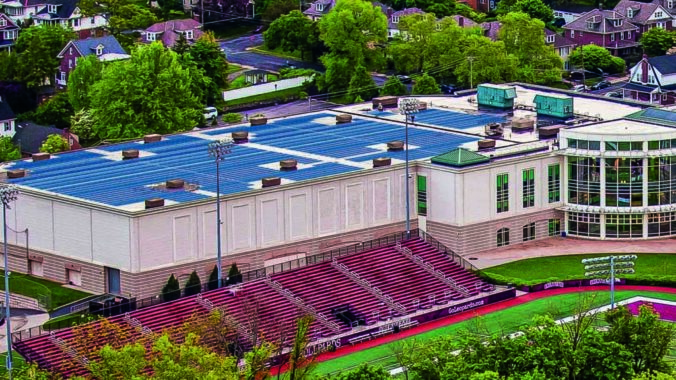Lafayette Clean Energy Center
Jeff Sargent, Matt Bahr, and Andrew Hutchinson
Intro
As human-made pollution grows and climate change accelerates, the push to implement more sustainable forms of energy production has been at the forefront of political, economic, and social discussions. According to the United States Office of Energy Efficiency and Renewable Energy, solar energy production currently accounts for only 3 percent of US energy production (Office of Efficiency and Renewable Energy, 2021).
Although solar energy is not yet a primary source of energy across the United States, the technology has existed and been advancing over the course of the last 50 years. The first patents for a solar powered engine, similar to the technology we have today, was issued to French mathematician Augustin Mochot in the 1860s (Smithsonian Magazine, n.d). The first solar cell was then constructed by New York inventor Charles Fritts roughly 20 years later in 1884 (See Figure 1). The original solar panels that were constructed had an energy conversion of roughly 1 to 2 percent, today modern solar technology has advanced to achieve an energy conversion rate of roughly 20 percent (Smithsonian Magazine, n.d).
Modern solar panels exist in two forms, thermal panels (CPT) and photovoltaic (PV) panels. Thermal panels (See Figure 2) are used usually for “water heating, the panels on your roof are the collectors of sunlight, thus heating up the liquid in the tubes which is then transported into your cylinder ready for use. (Office of Efficiency and Renewable Energy, 2021)” PV panels (See Figure 3), which are a newer technology than thermal panels absorb sunlight and transform it into electricity by utilizing a silicon based technology. While the cost of installing PV panels is typically higher initially (Green Match, 2021) they have become the more popular option for colder environments as they are less likely to freeze and more efficient in the winter than thermal panels.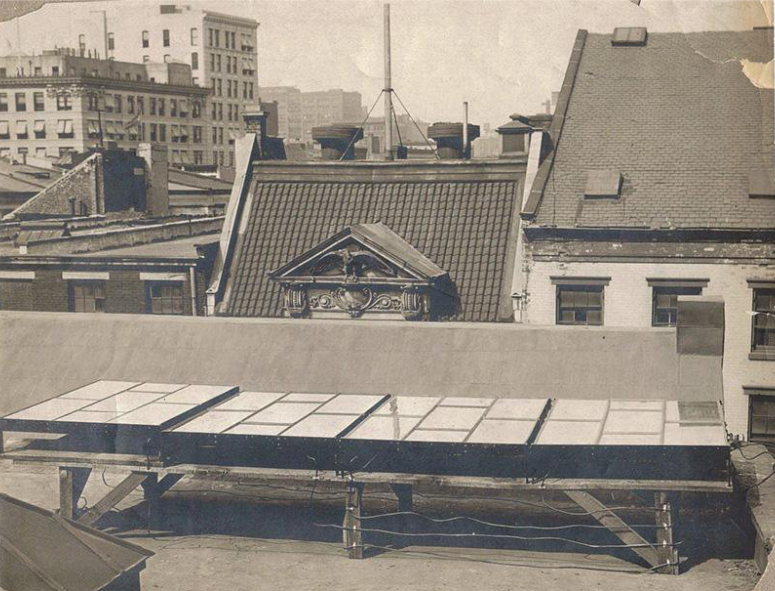
Figure 1: The First Rooftop Solar Panel Installation in 1884
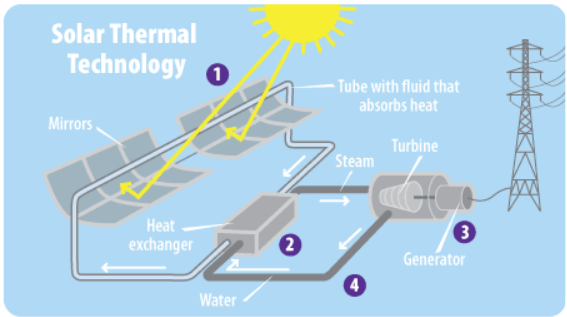
Figure 2: Thermal Solar Panel
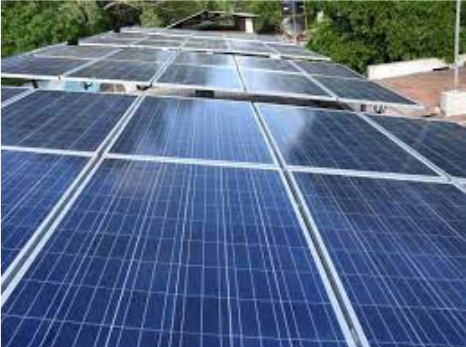
Figure 3: Photovoltaic Solar Panel
Over the previous summer Lafayette College began “installation of solar panels on the sun-soaked roof of Kirby Sports Center (Lafayette College Office of Sustainability, 2021).” Consisting of an array of rooftop photovoltaic panels, this project is part of a larger initiative by the college to reach carbon neutrality by the year 2035 as detailed in the “Climate Action Plan”. According to the Lafayette Sustainability Office, “the approximately 470-kilowatt (kW) solar array will power operations at Kirby. The solar installation is expected to generate around 540 megawatt-hours (MWh) of clean, renewable energy annually. Over its lifetime, the solar array will offset 9,625 metric tons of carbon dioxide (CO 2), or the equivalent of taking more than 2,000 cars off the road (Lafayette College Office of Sustainability, 2021).” In addition to providing power to the Kirby Sports Center and the surrounding power grid, the college also aims to use the solar array as an opportunity to “provide experiential learning opportunities for students.” In attaining this goal, Lafayette hopes to have faculty “integrate the project into courses, providing students a deeper understanding and a real-world example of solar at work (Lafayette College Office of Sustainability, 2021).”
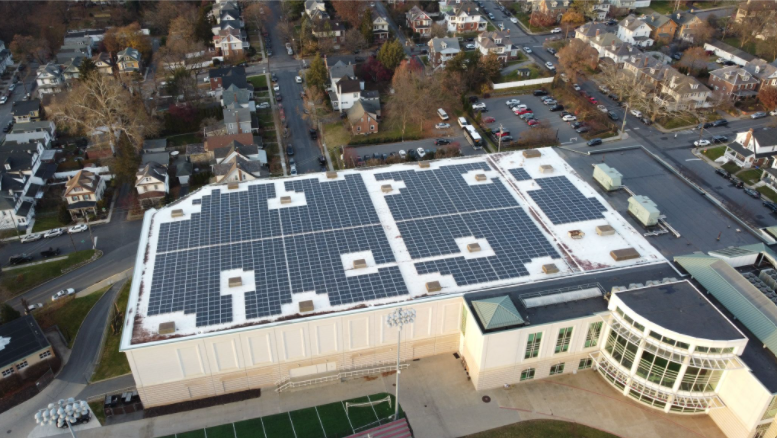
Figure 4: Photo of the recently completed Kirby Solar Array
Although the construction of the solar array is a strong step in the right direction for the College to become more sustainable, the goals of creating curricular tie-ins around solar energy and using the solar array to serve as a model to the community on sustainability have not been clearly outlined. Given the wide range of possibilities surrounding the solar array, our group has set out to clearly define a plan for the solar array to be integrated into the Lafayette curriculum as well as be a teaching tool for students in the surrounding Easton community. In order to gain the best perspective on possibilities for the solar array our group examined the types of solar projects that exist on other college campuses and how these solar projects have been integrated into curriculum at their respective institutions.
The college has plans to integrate the array into the curriculum but there are also other initiatives that can be taken in addition to curricular integration to help maximize the value the array brings to the college. After researching other peer institutions through various case studies, there are many key aspects of clean energy involvement on campus that we can replicate here at Lafayette. Lafayette has taken considerable steps to advance the sustainability sector at the college by involving sustainable environmental practices and advancing our energy efforts, but there is still more that can be done to involve solar to make Lafayette a greener campus. While the solar array is undoubtedly a positive step towards Lafayette’s goals of becoming carbon neutral by 2035 and also increasing the sustainability of the college, this can also be seen as a first step in making sustainability a focal point on campus. If the array is integrated and utilized into coursework as the college aims to, the Kirby solar array can be built upon in order to fund future sustainable projects where students can continue to gain hands-on learning experiences in the field of sustainability. In order to further involve the Kirby Solar Array within the campus, we propose to create a center on campus to revolve around all aspects of clean energy on campus and within the surrounding community. In order to continue this growth and advance the campus, we are proposing the creation and establishment of the Lafayette Clean Energy Center (LCEC). Involving this faculty led, student driven organization on campus would not only involve students directly with renewable energies like the Kirby Array, but would provide a space on campus to involve all academic disciplines and deeply engage the community in regards to clean energy.
In order to gain the maximum potential from the LCEC our group proposed developing an existing space in the Rockwell Integrated Science Center, adjacent to the current location for the Office of Sustainability as well as developing a Microgrid laboratory in the Kirby Sports Center. The reasoning for the first location, adjacent to the Office of Sustainability was primarily proposed to allow for the new staff working at the LCEC to have easy access to collaboration with the Office of Sustainability. For the microgrid laboratory our group’s goal was to allow for students easy access to the solar array. Having a location in the sports center, the same building that houses the array will allow for maximum hands-on opportunities with the solar panels as curricular tie-ins for multiple departments.
In addition to the physical developments associated with the LCEC, our group aims to have this space be a community resource for both Lafayette Students and the surrounding area. With the momentum of the solar array and the LCEC we believe we can implement community programs similar to what has been done at other schools that we examined in the case studies and technical portions of analysis. Our hope is that these developments will continue to strive for future sustainable efforts on campus and place Lafayette at the forefront of Institutions driving sustainable development.
Community Contacts
- Delicia Nahman – Sustainability Director at Lafayette College
- nahmand@lafayette.edu
- On Campus environmental clubs such as the Lafayette Environmental Awareness and Protection club (LEAP) or the Society of Environmental Engineers and Scientists (SEES)
- ASU Energy Innovation Department
- Drexel University Department of Climate and Sustainability
- NC State University Sustainability Office
- Energy suppliers to the Easton community
- Easton official that deals with renewable energy projects
